The role of art, design, and media as a means to raising awareness of the climate crisis
For this project, we were asked to create a prototype of a game/video/poster that raises awareness about climate change.
What is climate change
Climate change refers to long-term shifts in temperatures and weather patterns. These shifts may be natural, such as through variations in the solar cycle. But since the 1800s, human activities have been the main driver of climate change, mainly due to burning fossil fuels like coal, oil and gas.


What causes climate change
Generating power
Generating electricity and heat by burning fossil fuels causes a large chunk of global emissions. Most electricity is still generated by burning coal, oil, or gas, which produces carbon dioxide and nitrous oxide – powerful greenhouse gases that blanket the Earth and trap the sun’s heat. Globally, a bit more than a quarter of electricity comes from wind, solar and other renewable sources which, as opposed to fossil fuels, emit little to no greenhouse gases or pollutants into the air.
Manufacturing goods
Manufacturing and industry produce emissions, mostly from burning fossil fuels to produce energy for making things like cement, iron, steel, electronics, plastics, clothes, and other goods. Mining and other industrial processes also release gases, as does the construction industry. Machines used in the manufacturing process often run on coal, oil, or gas; and some materials, like plastics, are made from chemicals sourced from fossil fuels. The manufacturing industry is one of the largest contributors to greenhouse gas emissions worldwide.
Cutting down forests
Cutting down forests to create farms or pastures, or for other reasons, causes emissions, since trees, when they are cut, release the carbon they have been storing. Each year approximately 12 million hectares of forest are destroyed. Since forests absorb carbon dioxide, destroying them also limits nature’s ability to keep emissions out of the atmosphere. Deforestation, together with agriculture and other land use changes, is responsible for roughly a quarter of global greenhouse gas emissions.
Using transportation
Most cars, trucks, ships, and planes run on fossil fuels. That makes transportation a major contributor of greenhouse gases, especially carbon-dioxide emissions. Road vehicles account for the largest part, due to the combustion of petroleum-based products, like gasoline, in internal combustion engines. But emissions from ships and planes continue to grow. Transport accounts for nearly one quarter of global energy-related carbon-dioxide emissions. And trends point to a significant increase in energy use for transport over the coming years.
Producing food
Producing food causes emissions of carbon dioxide, methane, and other greenhouse gases in various ways, including through deforestation and clearing of land for agriculture and grazing, digestion by cows and sheep, the production and use of fertilizers and manure for growing crops, and the use of energy to run farm equipment or fishing boats, usually with fossil fuels. All this makes food production a major contributor to climate change. And greenhouse gas emissions also come from packaging and distributing food.
Powering buildings
Globally, residential and commercial buildings consume over half of all electricity. As they continue to draw on coal, oil, and natural gas for heating and cooling, they emit significant quantities of greenhouse gas emissions. Growing energy demand for heating and cooling, with rising air-conditioner ownership, as well as increased electricity consumption for lighting, appliances, and connected devices, has contributed to a rise in energy-related carbon-dioxide emissions from buildings in recent years.
Consuming too much
Your home and use of power, how you move around, what you eat and how much you throw away all contribute to greenhouse gas emissions. So does the consumption of goods such as clothing, electronics, and plastics. A large chunk of global greenhouse gas emissions are linked to private households. Our lifestyles have a profound impact on our planet. The wealthiest bear the greatest responsibility: the richest 1 per cent of the global population combined account for more greenhouse gas emissions than the poorest 50 per cent.


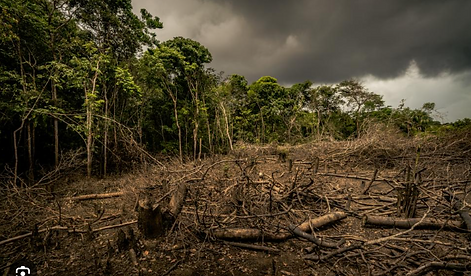









Effects of climate change
Hotter temperatures
As greenhouse gas concentrations rise, so does the global surface temperature. The last decade, 2011-2020, is the warmest on record. Since the 1980s, each decade has been warmer than the previous one. Nearly all land areas are seeing more hot days and heat waves. Higher temperatures increase heat-related illnesses and make working outdoors more difficult. Wildfires start more easily and spread more rapidly when conditions are hotter. Temperatures in the Arctic have warmed at least twice as fast as the global average.
More severe storms
Destructive storms have become more intense and more frequent in many regions. As temperatures rise, more moisture evaporates, which exacerbates extreme rainfall and flooding, causing more destructive storms. The frequency and extent of tropical storms is also affected by the warming ocean. Cyclones, hurricanes, and typhoons feed on warm waters at the ocean surface. Such storms often destroy homes and communities, causing deaths and huge economic losses.
Increased drought
Climate change is changing water availability, making it scarcer in more regions. Global warming exacerbates water shortages in already water-stressed regions and is leading to an increased risk of agricultural droughts affecting crops, and ecological droughts increasing the vulnerability of ecosystems. Droughts can also stir destructive sand and dust storms that can move billions of tons of sand across continents. Deserts are expanding, reducing land for growing food. Many people now face the threat of not having enough water on a regular basis.
A warming, rising ocean
The ocean soaks up most of the heat from global warming. The rate at which the ocean is warming strongly increased over the past two decades, across all depths of the ocean. As the ocean warms, its volume increases since water expands as it gets warmer. Melting ice sheets also cause sea levels to rise, threatening coastal and island communities. In addition, the ocean absorbs carbon dioxide, keeping it from the atmosphere. But more carbon dioxide makes the ocean more acidic, which endangers marine life and coral reefs.
Loss of species
Climate change poses risks to the survival of species on land and in the ocean. These risks increase as temperatures climb. Exacerbated by climate change, the world is losing species at a rate 1,000 times greater than at any other time in recorded human history. One million species are at risk of becoming extinct within the next few decades. Forest fires, extreme weather, and invasive pests and diseases are among many threats related to climate change. Some species will be able to relocate and survive, but others will not.
Not enough food
Changes in the climate and increases in extreme weather events are among the reasons behind a global rise in hunger and poor nutrition. Fisheries, crops, and livestock may be destroyed or become less productive. With the ocean becoming more acidic, marine resources that feed billions of people are at risk. Changes in snow and ice cover in many Arctic regions have disrupted food supplies from herding, hunting, and fishing. Heat stress can diminish water and grasslands for grazing, causing declining crop yields and affecting livestock.
More health risks
Climate change is the single biggest health threat facing humanity. Climate impacts are already harming health, through air pollution, disease, extreme weather events, forced displacement, pressures on mental health, and increased hunger and poor nutrition in places where people cannot grow or find sufficient food. Every year, environmental factors take the lives of around 13 million people. Changing weather patterns are expanding diseases, and extreme weather events increase deaths and make it difficult for health care systems to keep up.
Poverty and displacement
Climate change increases the factors that put and keep people in poverty. Floods may sweep away urban slums, destroying homes and livelihoods. Heat can make it difficult to work in outdoor jobs. Water scarcity may affect crops. Over the past decade (2010–2019), weather-related events displaced an estimated 23.1 million people on average each year, leaving many more vulnerable to poverty. Most refugees come from countries that are most vulnerable and least ready to adapt to the impacts of climate change.

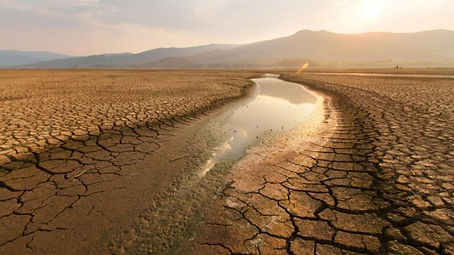


Climate change in video games / movies
Eco (Video Game)
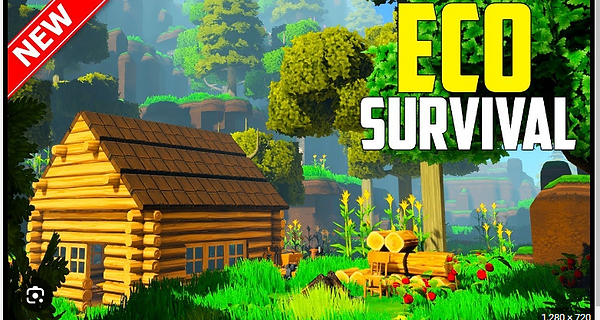
Released in early access in 2018, Eco is an award-winning open-world simulation game where the player must save the in-game world from an impending meteor strike by developing technology to the point where the meteor can be destroyed before it arrives. But, players have to be careful because their actions will impact the world around them.
As the player constructs civilizations, they have to monitor the world's plants, animals, and climate to avoid killing the world while trying to save it. Every detail within the game's world will impact the in-game graphs and heat-maps, which the player can use to see how their actions affect the world and what laws should be implemented.
Endling - Extinction is Forever (Video Game)
Released on July 2022, Endling - Extinction is Forever is a 2.5D survival adventure game where the player controls the last mother fox on Earth who has just given birth to four adorable cubs. When one of the cubs is abducted by a mysterious man, the mother fox embarks on a quest to find her child before it's too late.

I also looked into a few flash games that are mainly made by smaller creators, these two games are both about how penguins get kicked out of their habitat due to the rise in the temperature.
Ice Flows (Video Game)
The first climate change game puts the fate of Antarctic penguins in your hands. The game models how the Antarctic ice sheet responds to environmental changes. The game puts the player in control of ice flows in Antarctica and shows how they respond to alterations in the environment, whether it's an increase in temperature or decreasing snowfall.

Stop Climate Change! Save the penguins! (Video Game)
The second game is called Stop Climate Change! which is a similar concept but this time its a more battle royal type of experience where you are in an arena and have to push other penguins of to win, this idea shows how there is becoming less ice over time so the number of penguins that can fit on get lower. Both games had a simple goal but the gameplay part is too addicting and makes you concentrate very hard so you forget about the actual meaning behind the game.

Don't Look Up (Movie)
Don't Look Up highlights the way media addresses the very real danger of an impending catastrophe for Earth. Leonardo DiCaprio publicly supports climate change awareness and plays the lead role of a science professor in the movie. His task is to persuade the decision-makers that a rapidly approaching comet portends certain doom.
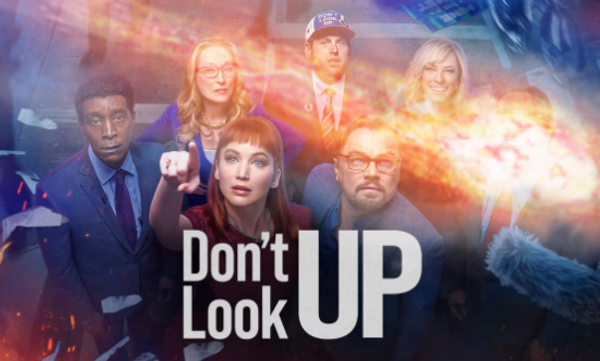
Interstellar (Movie)
Released in 2014, Interstellar is set in the future where humanity is struggling to survive due to climatic, dust bowl-like conditions, the movie follows a group of astronauts in search of a new home for mankind.


Wildfire VR ( Video Game Jam Pitch)
This game is focused on how climate change is affecting drought causing many wildfires in the US and getting worse each year. It uses VR as the hose to put out the fires and you need to take care how much water you are using, the less used means a higher score. I like the idea and the use of VR is really cool. This was being developed for a game jam and footage was uploaded to YouTube.

ROW (Video Game - Winner of Climate Jam 2019)
A sobering, but ultimately hopeful game about learning how to trust your enemy. It’s set in a world where climate change has taken its toll: drought and intense rainfall have driven two neighbouring cities to violence. And your character ends up in a row boat with your enemy as you both try to survive—and hopefully build a brighter future.
I liked the goal of the game about survival but working together to build a better future, and also that it was developed with simple visual almost old school type graphics, which made it look very simple and easy to play. One thing I didn;t like so much was the amount of text you needed to read initially as I just wanted to get into the game.
How other organisations/people are creating content to raise awareness
The United Nations has designated June 5 as World Environment Day. This date was instituted in 1974 to encourage "global awareness and action for the protection of our environment."
For this particular year, the theme was plastic pollution – a first for the UN and a huge win for the movement which has gained momentum over the last 12 months. Global awareness days, like World Environment Day, offer organisations an opportunity to share their message and connect with new audiences by leveraging the power of digital channels like social media.
Here are 2 great campaigns from World Environment Day.
#BeatPlasticPollution
Develped by the UN, the theme was #BeatPlasticPollution and they launched with an online, global game of tag. Seeded with a high impact, celebrity-led film including Arnold Schwarzenegger, Moby and Rachel Dratch, the campaign gave consumers 24 hours to tell the world how they were going to #BeatPlasticPollution and tag a friend to get involved.
#PassOnPlasticEmoji
The Sky Ocean Rescue team took a totally different approach and launched a petition asking Unicode to remove their single-use plastic cup emoji from our keyboards to raise awareness of the need to stop the normalisation of single-use plastic. The motivation – “If we don’t remove the cup with straw emoji, we might soon have to remove the whale, fish and marine wildlife emojis.”
The move came as part of their ongoing campaign which inspires people to make simple, everyday changes to stop our oceans from drowning in plastic.
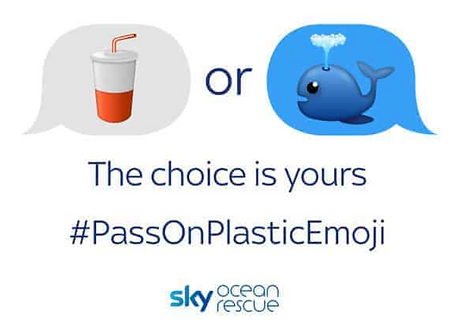
Initial ideas and final solution following brainstorming and research
Carrying out this research gave me some good insight into the causes of Climate Change and the impact that it causes around the world.
It definitely raised my own personal awareness having looked into multiple mediums like films, games, online media and social media campaigns and actually there are so many things that impact climate change it makes you realise what a massive problem it is.
After brainstorming different topics and ideas with my classmates, I narrowed it down to three main ideas which are focused around gaming which is my chosen area of specialism.
-
A game where the earth has been overtaken by climate change. There are just a few survivors and you are sent to another planet to try and start a new life, growing vegetation, figuring out how to create oxygen, and basically learning how to survive and develop a new world.
-
A game where the world has been reduced to dust and rubble due to climate change. Figure out how to grow your own food to survive and build a new world/life.
-
A game Focusing mainly on the sea and how climate change is affecting sea levels and the animals within it. I also combined the issue of waste and how dangerous it can be affecting the life within the ocean, so it's important for awareness to be continually made in order for the world to help stop it.
Concept 3 - This is the concept I have agreed with my friend Sasha to continue developing for our final game. We will be partnering up for this project and be carrying out different aspects along the way and bringing it all together or the final game.
Planning
Sasha and I partnered up for this project and split the responsibilities in such a way that we could keep a steady flow of work to enable us to meet the requirements of the project. For example, we needed research on the environment before we could research collectables so the collectables make sense in the given environment. Likewise, it wasn't possible to create the turtle’s gameplay without knowing more about turtles and how they live, move around, eat etc to build a picture.
The responsibilities included:
Climate change research via Media, movies and other games, storyboard, game name, gameplay, areas, area research, area environment, turtle research, collectables research, collectable modelling, turtle concept art, and advertising research.

Research on collectables
After deciding on the area of Climate change I wanted to focus on, with my colleague Sasha we decided to make a game that could be fun, but also educational so that the player is also learning as they go.
Our game if focused on the Ocean and will include a collectable in each area of the map that the player can find and interact with. Each of these will contain a random fact about fish in the ocean.
The areas decided on were:
-
Area 1 - A straightforward area that shows the sea without any real impact of climate change. Most likely, it will be an empty beach with lots of fish swimming.
-
Area 2 - A modest example of the most basic water contamination. There might be some people on the beach and not much trash. The area's key lesson is that even some minor actions can have an impact on the entire ocean and drive fish out of their natural habitat.
-
Area 3 - Will show how really dangerous overfishing is and make a near sea fish market with lots of caught fish.
-
Area 4 - Will show the dangers of water pollution in its worst form. This will be a similar situation to the second area in terms of waste and plastic, but it will look quite different and show a far greater threat.
-
Area 5 - The last area is where factory pollution pollutes the sea continuously. It leads to the final area with the fishing nets, which relate to overfishing and water pollution will also be introduced.
With now having the basic ideas for each of the areas, it was decided what collectables would be located there.
-
Area 1 - 3 most common fishes.
-
Area 2 - 3 fishes that are forced out of their habitats.
-
Area 3 - 3 fishes that get overfished.
-
Area 4 - 3 fishes that are dying to plastic pollution.
-
Area 5 - 3 fishes that are going extinct.
After searching up some information about fish and climate change, the facts that so far I have decided to be the most important in this game are:
-
"Did you know the three most common fish in the ocean are Clytclothine Bristlemouth, Grass Carp, and Peruvian Anchoveta".
-
"Did you know that the consumption of the world’s fisheries increased from 60 million tonnes in 1976 to over 150 million tonnes in 2012? That’s more than double the amount of fish caught for global consumption in just a few decades".
-
"Did you know species that are the most threatened by overfishing are Bluefin tuna, monkfish and the Atlantic halibut"?
-
"Did you know that these 3 fish are close to becoming extinct? Nassau Grouper, Atlantic Bluefin, Tuna Chinese Sturgeon".
-
"Did you know that If average global temperatures rise by five degrees Celsius, that could mean almost two-thirds of global fish species could be eradicated by 2100?".
Turtle research – Life and habits
In order to create the turtle’s gameplay its important to understand more about the species, how they live, move, eat, where they live how they function. Here are some key facts I found along with some interesting points regarding how climate change is affecting turtles.
-
Climate change impacts lots of things in our world, from sea levels to strange weather. But it also affects sea life. A study has shown that the temperature of the sand is changing in some areas and this affects green sea turtle eggs.
-
Warmer sands mean that 99% of all hatched green sea turtle eggs are hatching as female. This could result in these turtles becoming extinct - a team from WWF (The World Wildlife Fund) have come up with a plan to help.
-
Most turtles are active during the day, spending their time foraging for food.
-
Turtles are not social creatures. While they typically don’t mind if there are other turtles around them, they don’t interact or socialize, according to Encyclopedia Britannica.
-
Turtles are not silent creatures. Some sound like electric motors, some sound like belching humans and some bark like dogs. The red-footed tortoise from South America clucks like a chicken.
-
Turtles spend most of their lives in water. They are adapted for aquatic life, with webbed feet or flippers and a streamlined body. Sea turtles rarely leave the ocean, except to lay eggs in the sand.
-
Semi-aquatic turtles like to swim and to bask. When swimming, they look busy but synchronized. They may take a few minutes out from swimming to rest quietly on the bottom of their tank or to walk slowly along searching for prey.
-
Turtles often like to climb up and over a rock or log, even when they could easily walk around the obstacle.
-
Turtles have excellent vision and apparently an acute sense of smell as well.
-
Turtles are very adaptive and can be found on every continent, except Antarctica.
-
Most turtles are omnivores; they eat a variety of different things, depending on their species. Musk turtles eat mollusks, plants, small fish and insects.
I watched videos on YouTube to see how turtles move around using their flippers so could look to replicate the movement in the game in the same way so it really feels like how a turtle would swim and move on land. This is important to get right so it feels real and not super fast which, but not too slow either or the player wouldn't get anywhere.

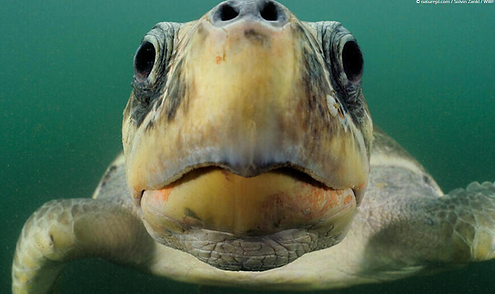



Game Name
I brainstormed a number of names which then I narrowed down to Turtle swim, and Turtle life, but eventually we came to a agreement together and decided on the name "Turtle Dive" for our game.
Turtle Concept Art
Before I started to model the sea turtle I did some concept art to get a better idea of turtles in general in particular how they move through the water, and how there arms function when swimming. Along with my general research on sea turtles, this helped me figure out how I wanted to model my version of a turtle for the game.

Turtle Modelling
I created the sea turtle using the software Autodesk Maya. Having done a lot of research on turtles I knew how I wanted mine to look and the concept art helped me as reference material also.
The sea turtle is what the player will play to explore the map.

Area concept art/planning
Once me and sasha discussed and agreed on how we want the game to look and play like, he made some concept art on how each area will look and jotted down the ideas for gameplay. This includes 5 original areas, and the starting and the ending area.







The area concept art was drawn by Sasha.
Map and Game Concept
Here is our map in progress, once completed there will be other caves and beach areas the player can explore, each area will have 1 collectable that you can interact with to find out a random fact about the ocean. The more you explore this map and reach other sections you will notice how the map starts to change as it shows the effect of climate change.
Unreal Engine 5 and Autodesk Maya are the software we are using to build our game.
First, a basic land model with a few rocks was made with the rest mainly water. There will be a small tunnel for the turtle to learn water moves quickly. The gameplay is easy to grasp.


In the first area big rocks were added and underwater caves for collectibles. The area looked empty, so low poly trees were added on the beach plus water. The path to the second area was started at this point.






The turtle model that I made was then imported into the game to get a feel for how the gameplay will look.


To show how this area would look, some sea leaves were added at different heights to create a realistic effect without blocking important areas. Additionally, multiple copies of a fish were created to give a swarm effect. These fish swarms were positioned in various directions to add realism to the scene.


.png)
.png)
Here is a prototype of the collectables where the fish model was redesigned to save time with the text above with information.
.png)
Some sand texture was then added to make it look more realistic.
.png)
.png)
Blockouts were made by Sasha in Unreal Engine.
Turtle model was made by myself.
Game Pitch
In short, the pitch is: Turtle Dive is a fun, educational game heavily focused on climate change and how it is affecting the oceans and the creatures within it. Swim your turtle through different locations either on land or in water avoiding pollution and debris in order to find collectables that hide interesting facts about climate change. Move through the game and see how climate change is affecting the ocean learning while you go.
See the dropdown menu at the top of the page where myself and my friend Sasha talk about the ideas of our project and planning, details of our script and video recording.
Advertising / Marketing research
Initially, I'd plan to show the game within college, friends and family then look to distribute it wider on all major social media platforms and gaming forums.
TikTok is a simple platform for people to share and interact with me, ask questions and provide feedback. TikTok has grown huge popularity since the Pandemic.
I can also advertise the game on Instagram, Facebook, Twitter, and Snapchat, and while this comes at a cost, it's critical to budget some money in order to get your game out there and visible to your target audience. I could also give the game away for free at first to several gaming review websites or bloggers in exchange for positive reviews, which would help increase interest in the game.
I could also stream the game on Twitch to gain interest that way. I can also approach YouTube creators to help promote my game to their audiences, but this will most likely cost me money. I can also start a Discord or Facebook community and invite people to join in order to grow my community.
I would consider social and economic events in the world and target those dates to help expose the game. For example, I found an environmental Awareness calendar (https://greenecofriend.co.uk/environmental-awareness-calendar/) in which there is a “World Turtle Day” that was created as an annual observance to help people celebrate and protect turtles and tortoises and their disappearing habitats around the world.” This day alone ties in perfectly with my game being about a turtle. So targeted advertising I think could work well for a climate change type of game in the social media channels initially offering it free to get it noticed and build from there.
Costs associated with developing and marketing
There are many articles online stating that you would need a budget of around $50,000 to $500,000 to make a really successful indie game. The lower amount is the total rough cost for a solo developer working for a year on a game. This would include publishing and some minimal marketing. A much more detailed analysis would be required to get real costs involved to develop, and then market it versus what I could earn from the cost a user will pay for a game.
Evaluation
I gained a lot of knowledge about a variety of subjects while working on this project. My first project in a team let me realise how much responsibility there is. I know now how to be more organised when performing my work and how to operate in a team. We struggled to assign each person the same amount of work, and as a result, we set unrealistic goals for each other, such as expecting each of us to develop a playable game despite the time constraints and our lack of coding skills.
I believe we have come up with a very good game idea that works really well on demonstrating the problem of water pollution and more, and how it affects climate change.
The research was a big part of the project and took me a lot of time to research what climate change is and what causes it, how others raise awareness of climate change, different types of games, sea turtles, climate change facts, collectables, movies reflecting climate change, etc. As I spent much of my time doing research in this project, I have learnt a lot about climate change and how serious it really is. It opened my eyes a great deal and made me personally realise how the world needs to do so much more.
I also believe my creative ideas for games and research skills have massively improved during this project, especially when considering different media as it opened up my mind to think about different areas and made me product ideas that may not have come to me if i'd only looked at games.
I feel like my management for this project was pretty good. I tried to keep my time management in line with the timescales of the project but could have improved my speed somewhat on the research. It definitely helped putting together a schedule with all the tasks and who is doing what from the beginning of the project to keep things on track.
Overall I believe that I was successful on this project and learned a lot of stuff that will help me in the future and enjoyed working with my friend Sasha as part of a team. I hope that I was able to raise awareness with my idea and that people will look into the climate change crisis a bit more.
Games are one of the most widely used forms of media nowadays and are one of the best for conveying ideas.
Research Sources and Bibliography
https://www.UN.org. Causes and effects of climate change. [Online]. Available at: https://www.un.org/en/climatechange/science/causes-effects-climate-change [Accessed 7 Nov 2022].
https://www.store.steampowered.com. Eco. [Online]. Available at: https://store.steampowered.com/app/382310/Eco/ [Accessed 14 Nov 2022].
https://www.youtube.com. [2022] Endling: Extinction is Forever [Online]. Available at: https://www.youtube.com/watch?v=VAAtafgO1kY [Accessed 14 Nov 2022].
https://www.youtube.com. [2021] Don't Look Up [Movie Online]. Available at: https://www.youtube.com/watch?v=PLuRMtyoj1Q [Accessed 7 Dec 2022].
https://www.youtube.com. [2023] Interstellar [Movie Online]. Available at: https://www.youtube.com/watch?v=mBHtPuhIuoI [Accessed 7 Dec 2022].
https://www.youtube.com. [2018] Beat Plastic Pollution [Online]. Available at: https://www.youtube.com/watch?v=7HIkIBsKZF4 [Accessed 7 Dec 7 2022].
https://www.youtube.com. [2018] Beat Plastic Pollution [Online]. Available at: https://www.youtube.com/watch?v=7HIkIBsKZF4 [Accessed 7 Dec 7 2022].
https://www.youtube.com. [2016] Wildfire VR [Online]. Available at: https://www.youtube.com/watch?v=qnsq22r9_d4
https://beagle-studios.itch.io/. [2022] Row. [Online]. Available at: https://beagle-studios.itch.io/row [Accessed 9 Dec 2022].
https://www.greenhouse.agency.com [2022] 5 digital campaigns that made a splash on World Environment Day [Online]. Available at: https://www.greenhouse.agency/blog/5-digital-campaigns-that-made-a-splash-on-world-environment-day/ [Accessed 11 Dec 2022].
https://www.youtube.com. [2019] Sea Turtles 101 | National Geographic [Online]. Available at: https://www.youtube.com/watch?v=5Rmv3nliwCs [Accessed 12 Dec 2022].
https://www.wired.co.uk/article/ice-flow-penguin-game. [2016] Ice Flows climate change game puts the fate of Antarctic penguins in your hands [Online]. Available at: https://www.wired.co.uk/article/ice-flow-penguin-game [Accessed 12 Dec]
https://www.worldwildlife.org. Facts. [Online]. Available at: https://www.worldwildlife.org/species/sea-turtle [Accessed 12 Dec]
https://conserveturtles.org. Information About Sea Turtles: General Behavior. Available at: https://conserveturtles.org/information-sea-turtles-general-behavior/ [Accessed Dec 14]
`


